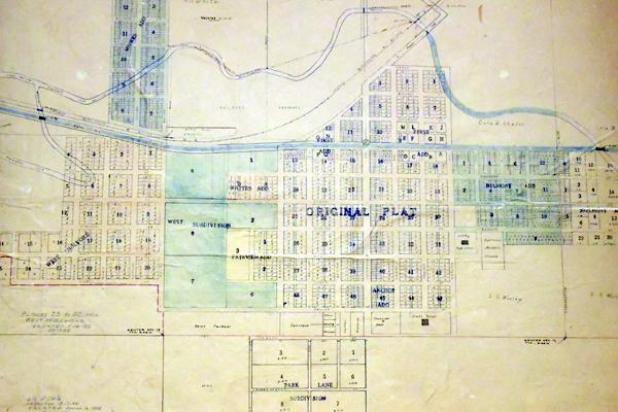
This map of Holyoke at City Hall is from March 16, 1925. Many Holyoke streets and avenues were named after people who were influential in the county or in the railroad industry. — The Holyoke Enterprise | Johnson Publications
Street names reflect history and mystery
You may walk or drive them every day, but when was the last time you thought about how Holyoke streets and avenues got their names?
In many cities across the country, streets are simply numbered. This may make it easier for a newcomer to find their way around town, but those streets can lack a unique quality to their names that adds to a city’s charm and character.
Streets like Denver and Akron were likely named for other cities, and Interocean Avenue in landlocked Holyoke is literally situated between the Atlantic and Pacific oceans, which may have been how it got its name.
While the origins of some of the names of Holyoke’s streets and avenues can’t be known with absolute certainty, and some have very little if any information available, many are named after influential people in the county or in the railroad company.
“Holyoke should take great pride in the railroad which runs through the town,” the June 15, 1931, edition of the Enterprise points out. “For if it hadn’t been for the railroad the town would never have come into being.”
By the summer Holyoke was founded, the Burlington Railroad had been built to a place called Shamp’s store, located about 2 miles east of the present Holyoke site. A little settlement had been built up around the store. People often went there to get their mail and hear the news. At the time, some thought the new town would be located there, but the land could not be bought.
Fortunately, an early settler named S.S. Worley, for whom Worley Avenue was named, had drawn a map in 1886 roughly outlining the area that is now Phillips County and located an imaginary town at Holyoke’s present location and named it Center. At this time, the land was still part of Weld County.
Unlike the land at Shamp’s store, the land where the imaginary town of Center sat was ultimately secured, and the railroad started construction of tracks to the present town site. The tracks to the new town site were completed Aug. 17, 1887.
The town site itself was laid out by a railroad surveyor named Smith who was assisted by T.B. Carnahan and W.R. Bigner. The latter’s last name may seem similar to Bignel Street, but it is more likely named after William Bignell who, like Carnahan, was an early homesteader. According to the fourth volume of the 1895 book “History of the State of Colorado,” Bignell built a sod house on his land claim, and this was the first building in Holyoke.
The full article is available in our e-Edition. Click here to subscribe.
